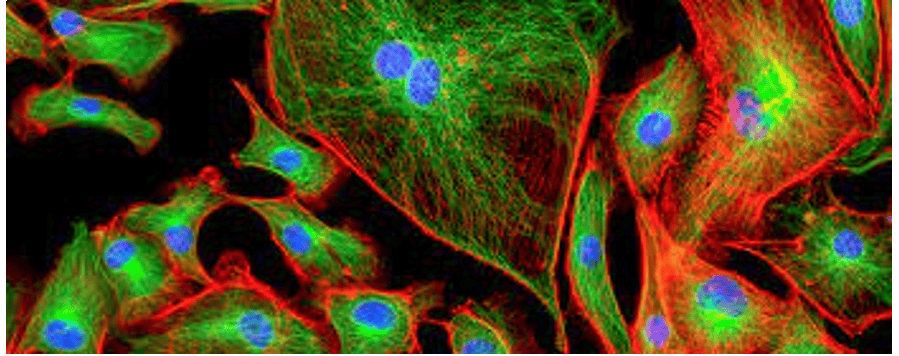Global live cell imaging market is expected to foresee significant growth during the forecast period. North America to witness the highest growth
Author: Vikas Kumar
07 May 2022

Global live cell imaging market is expected to grow significantly by 2027 expanding at a reasonable CAGR of around 8% during the forecast period (2021-2027). The real-time study of cells using the images obtained from screening systems and microscopes is known as live-cell imaging. It plays a crucial role in understanding cell dynamics in various research fields including immunology, genetics, neurology, microbiology, etc. as it provides information with precision.
For a detailed analysis of the live cell imaging browse through https://univdatos.com/report/live-cell-imaging-market/
The global live cell imaging market is anticipated to witness an uptick owing to the development of social society leading to changes in diet and other lifestyles. This along with the rapidly growing aging population across the globe is causing an increase in the number of patients suffering from various chronic diseases. For instance,around 18 million Americans aged 20 and above have heart disease and nearly 650,000 Americans die of heart disease each year. Therefore, the demand for live-cell imaging is projected to rapidly increase as a result of the rising demand for effective and quicker diagnostic solutions for the early detection of diseases. Furthermore, the growing research & development activities in various biotechnology and pharmaceutical companies, growing adoption of high-content screening techniques in drug discovery, and rising government funding for cell-based research are some of the other prominent factors contributing to the growth of the market globally.
For a detailed analysis of the market drivers of live cell imaging browse through https://univdatos.com/get-a-free-sample-form-php/?product_id=19869
Based on product, the market is segmented into equipment, consumables, and software. The consumables segment accounted for the largest market share in 2020 and it is estimated that it will exhibit a significant CAGR during the forecast period owing to the increasing use of live imaging systems across a wide range of applications for the diagnosis of disease and the need to purchase various consumables frequently.
Based on the technology, the global live cell imaging market is segmented into time-lapse microscopy, fluorescence recovery after photobleaching, fluorescence resonance energy transfer, high content screening, and others. fluorescence resonance energy transfer occupied a substantial share and is expected to grow at a CAGR of XX% during the forecast period 2021-2027 owing to the growing adoption of this technique alongwith the improved fluorescent probes. Further, this technique enables researchers to study the energy transfer mechanism and the interaction of the proteins which in turn is also boosting the growth of this segment.
Request for Sample of the report browse through https://univdatos.com/get-a-free-sample-form-php/?product_id=19869
Additionally, the report provides detailed report also provides insights into the global live cell imaging market according to the regions such as North America (United States, Canada, and the Rest of North America), Europe (Germany, France, Italy, Spain, United Kingdom, and Rest of Europe), Asia-Pacific (China, India, Australia, Japan, and Rest of APAC), Rest of World has been conducted. North America dominated the market and generated revenue of USD XX billion in 2020 owing to the well-established market players and frequent product launches.
PerkinElmer, Inc., Becton, Dickinson and Company, Carl Zeiss AG, Danaher Corporation, Olympus Corporation, Sartorius AG, Thermo Fisher Scientific, Nikon Corporation, Biotek Instruments, Inc., CytoSMART Technologies, are some of the key players operating in the global live cell imaging market. Several M&As along with partnerships have been undertaken by these players to develop new live cell imaging.
Global Live Cell Imaging Market Segmentation
Market Insight, by Product
- Equipment
- Consumable
- Software
Market Insight, by Technology
- Time-lapse Microscopy
- Fluorescence recovery after photobleaching (FRAP)
- Fluorescence resonance energy transfer (FRET)
- High content screening (HCS)
- Others
Market Insight, by Application
- Cell Biology
- Developmental Biology
- Stem Cell & Drug Discovery
- Others
Market Insight, by End-Users
- Pharmaceutical & Biotechnology Companies
- Academic & Research Institutes
- Contract Research Organizations (CROs)
Market Insight, by Region
- North America
- United States
- Canada
- Rest of North America
- Europe
- France
- Germany
- Italy
- Spain
- United Kingdom
- Rest of Europe
- Asia-Pacific
- China
- India
- Australia
- Japan
- Rest of Asia-Pacific
- Rest of World
Top Company Profiles
- Becton, Dickinson and Company
- PerkinElmer, Inc.
- Carl Zeiss AG
- Danaher Corporation
- Olympus Corporation
- Sartorius AG
- Thermo Fisher Scientific
- Nikon Corporation
- Biotek Instruments, Inc.
- CytoSMART Technologies
Get a call back
